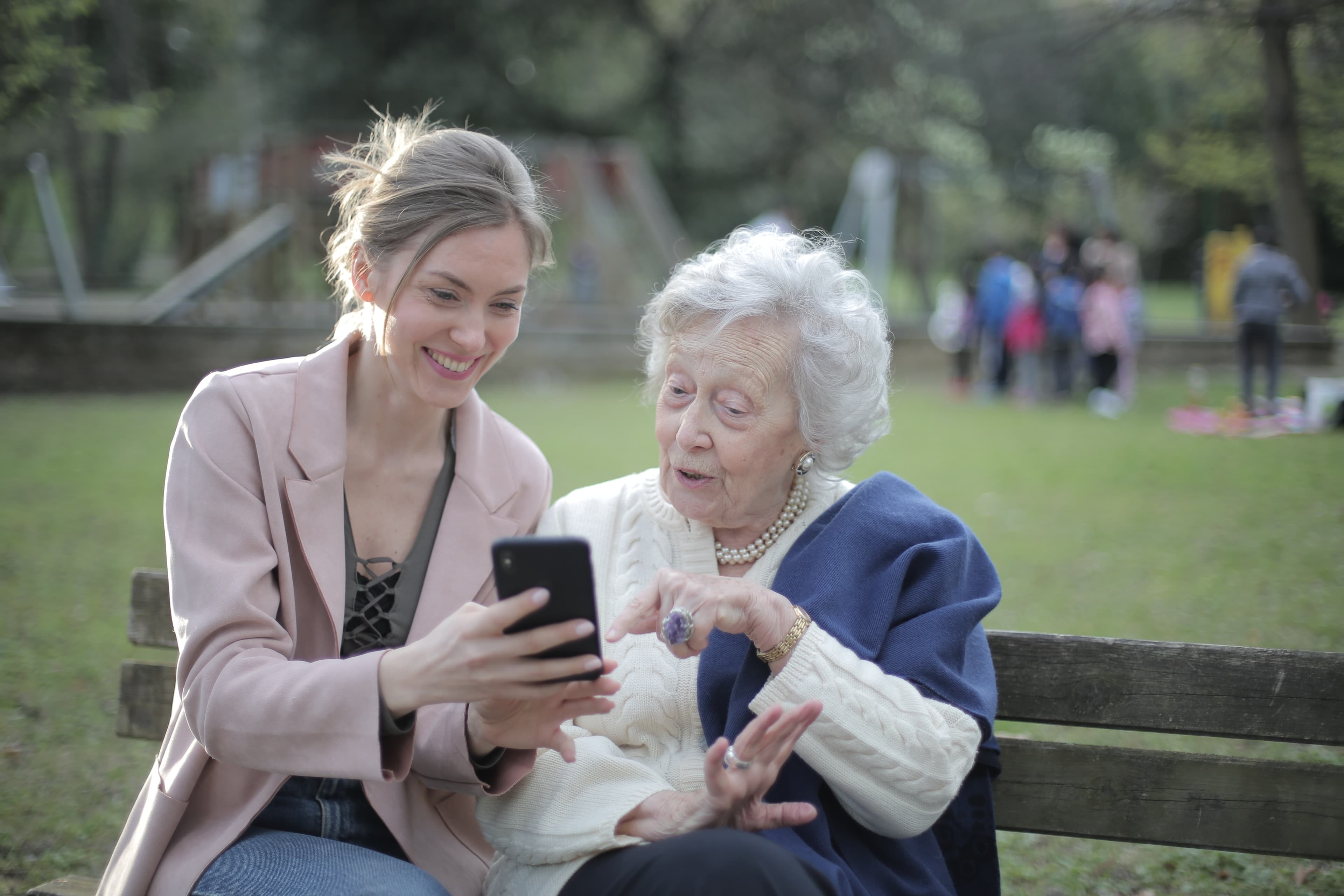Care is essential to the very fabric of society. Without it, communities would fail to thrive, and entire countries would collapse. Everyone requires care at some point in their lives. Either as a child, after an injury or illness, or as we age. In any case, caregivers provide support and nurturing to prepare us for the world, get us back on our feet, or help us enjoy our days later in life.
To identify the gaps in support that caregivers are facing and better understand their needs, Carewell conducted a survey in September 2022 among its customer base. In total, it received more than 400 responses and explored caregivers’ level of satisfaction with the support they receive from their family, community, employers, and the government.
The survey findings were used to develop a report bringing awareness to the gaps in support caregivers are experiencing and to advocate on behalf of their needs. In this article, we highlight the key takeaways from the report and provide recommendations on how to meet the needs of caregivers.
Who Are Family Caregivers
Caregiving Demographics
As of 2022, there are more than 53 million family caregivers in the U.S, a 21% increase from 43 million in 2015. The vast majority have no formal medical training and are often suddenly thrust into the role of caregiver having to adapt to care for their loved one quickly. The average caregiver is a woman in her 60s caring for a spouse, parent, or in-law. However, that’s slowly changing as millennials, and Gen Z are increasingly taking on caregiving roles.
Either way, caregivers provide a broad range of assistance, depending on their care recipients’ abilities. Tasks may range from helping with groceries and providing transportation to 24-hour care that requires assistance with daily living needs such as bathing, eating, and dressing.
Caregiving and Careers
A 2021 survey by Carewell found that more than 50% of caregivers provide over 40 hours of care to their care recipients a week while balancing a full-time job. Although many continue working outside the home while caring for a loved one, a large portion struggles to stay afloat financially, as 91% receive no additional financial assistance leading them to pay for their care recipients’ needs out-of-pocket. Moreover, caregivers report spending around 26% of their income on the loved ones they care for.
Caregiving and Health
In addition to the financial impact, caregiving affects caregivers' mental and physical health. Although caring for a loved one can be incredibly rewarding, it isn’t without stress. Being responsible for a loved one’s well-being and overall health can lead to anxiety, exhaustion, mood swings, and even depression. It can also cause caregivers to stop taking care of their own needs because they’re so focused on their care recipient.
The Needs of Caregivers
Family and Friends
Overall, respondents were satisfied with the support their friends and family provided. When asked about the type of support they find most helpful, 56% percent wanted more emotional support. Help with the care recipient and respite care came in second and third, respectively. From providing respite care to much-needed social interaction, friends and family play an essential role in supporting caregivers.
Governmental Support
When asked about governmental assistance, the responses weren’t as positive. On a scale of 0 to 10 – 0 being unsatisfied and 10 being satisfied – the average level of satisfaction with government assistance available for caregivers was a four (4). When we dove into the type of assistance that would be most beneficial to their situation, financial assistance and free respite programs were the most popular selections.
Community Resources
In terms of community resources, 76% percent of respondents indicated having never used the caregiving resources available in their communities, such as support groups or respite programs. In addition, the average satisfaction level with the resources offered by the community was five (5).
Employer Support
The survey found that 69% of caregivers selected flexibility as the best way employers could support them. Options like remote work or flexible schedules allow working caregivers to balance their responsibilities and roles better. Most caregivers have full-time jobs outside their homes while providing a loved one with an average of 40 hours of care per week. Without adequate flexibility from employers, some caregivers must quit their jobs to be able to support their loved ones.
Society’s Role
When asked how society can support caregivers, 53% of respondents asked for understanding and patience. Numerous respondents also mentioned acknowledging their role and efforts would go a long way. In contrast, others focused on the need for companionship as caregiving can be an isolating experience.
How to Support Caregivers
It Takes a Village
Providing family caregivers with the support they need to better perform their responsibilities without sacrificing their mental, physical, and financial health starts at home. It’s easy to feel hopeless and in a constant state of stress as a caregiver. In addition, worrying about the needs and health of a loved one increases the risk of developing anxiety, depression, and other adverse health effects.
Providing emotional support by allowing the caregiver in your life to vent their frustrations without the fear of judgment can provide a purifying experience that they desperately need. Beyond just listening, reassure them that they’re doing the best they can and have compassion for their situation. This is not only a kind gesture, but according to the American Psychological Association, emotional support can lead to lower stress and increase individuals’ well-being.
Federal and State-level Support
Considering that the majority of caregivers pay for their care recipient’s needs out-of-pocket, it’s easy to understand why respondents were most interested in financial assistance from government organizations. While most private health insurance plans and programs like Medicaid and Medicare may offer some relief by covering certain costs, caregivers still spend an average of $7,242 each year. There are also a few governmental programs that allow family caregivers to earn money while they provide care – available through Medicaid and Veteran Affairs – but not all care recipients/caregivers qualify.
The survey also found that caregivers are interested in free respite programs. The average duration of a caregiver’s role is four (4) years and only 30% of caregivers care for less than 1 year. It is a long-term commitment that requires breaks in order to endure the length of their responsibilities. Studies also indicate that for many caregivers respite provides an opportunity to fully process the emotions they suppress while focusing on caregiving tasks.
Building Online Communities
Our communities provide us with a sense of belonging and purpose that can tremendously impact our well-being. The same is true for family caregivers. Sharing their experiences and emotions with others who can relate can be transformational. But unfortunately, while communities may have resources like support groups and respite services available for caregivers, the majority aren’t learning about the opportunities available in their areas.
Family caregivers are increasingly turning to social media. A 2010 study by UnitedHealthcare and the National Alliance for Caregiving found that 70% of the caregiver respondents they surveyed used social media to find information or support related to caregiving. As such, community programs should focus on reaching caregivers via social media. Partnering with local caregivers that are leading voices within the community can help bring awareness to the available resources. In addition, by building a social media presence, programs can reach family caregivers that aren't aware that help exists.
Retaining Talent with Caregiving Benefits
Caring for a loved one is already stressful. Choosing between your job and providing care for a family member can induce anxiety, panic, and even depression. The February 2022 Federal Reserve’s Monetary Policy Report showed that caregiving was the second leading reason keeping people out of the workforce. As the demand for caregiving increases throughout the next decade, more people will look toward their employers to identify accommodations that will allow them to continue working while providing care.
More companies have begun to add caregiving flexibilities to their benefit packages. Options like family leave and employee resource groups are among the most popular options offered by employers. Providing employees with these flexibilities doesn’t just help caregivers, it also benefits companies as it allows dependable, talented employees to balance their personal and work roles.
Offer understanding and empathy
Being a caregiver affects every aspect of life. And although rewarding, it changes caregivers’ hobbies, sleep schedules, finances, and social life. Caregivers face an increased risk of depression. As a result, caregivers face an increased risk of depression. For example, between 40% to 70% of caregivers experience signs of depression caused by the demands of caregiving and the social isolation that comes with it.
Caregivers ask that, as a society, we recognize their efforts and understand their essential role in our communities, families, and country. Extending empathy and understanding their needs can help relieve the immense pressure many feel and help combat the isolation they experience.
Conclusion
The need for family caregivers is going to grow exponentially within the next decade. By 2030, all Baby Boomers – 73 million people – will be over 65. Moreover, the caregiver support ratio – the number of people available to care for a person during their high-risk years (80+) – is forecasted to decrease. The ratio will drop from seven people for every person who needs care to only four people per care recipient by 2030. In addition, in the U.S., there is an unprecedented increase in the number of older people16. Sometimes referred to as the Silver Tsunami. These factors will exponentially increase the need for care and stir an awakening around the importance of caregivers.
By filling the gaps and creating programs/benefits that meet the needs of caregivers we can ensure that this “invisible workforce” has what is needed to continue caring well without having to sacrifice their mental, emotional, physical, and financial health.
For the full report, please click the "Read More" button below.



